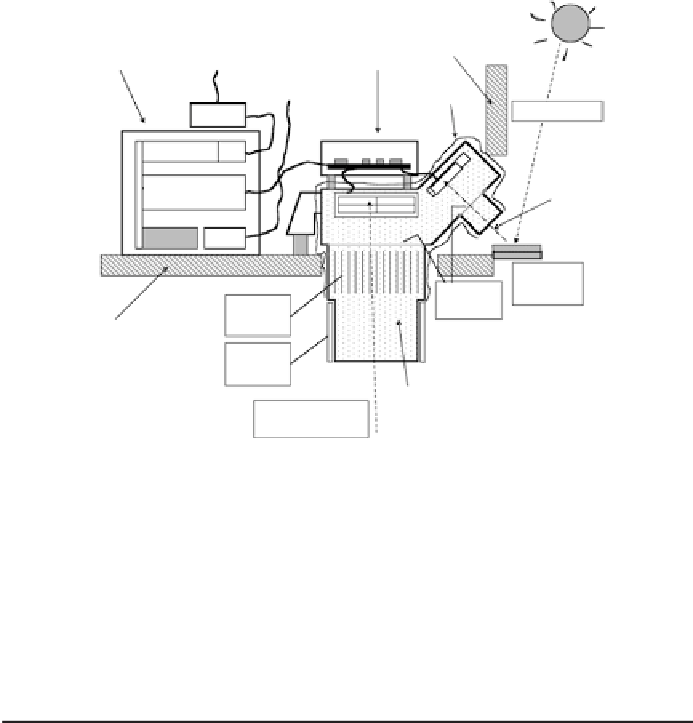Geoscience Reference
In-Depth Information
Spacecraft
Y-Panel
DHU
NIX-E
XRS-S
+50VDC
Multi-Layered
Insulator
Solar X-rays
PIM
PreAMP
SH-OBC
I/F
1”CCD
XRF off
Standard
Sample
CCD-driver,AE,
ADC,DE,TEC,HK
1”CCDx4
NIRS-E
PSU
Standard
Sample
Be Foil
5µ-thick
Collimater
FOV=3.5
°
Spacecraft
Z-Panel
OSR
300 cm
2
Temperature of the case that
mount CCDs kept below
−
50
°
C
by radiation cooling
X-rays from
Asteroid or CXB
Fig. 1. A schematic diagram of the XRS is shown. The XRS is composed of the XRS-S
(sensor unit) and the NIX-E (electronics). Charge-coupled devices (CCD) are used as
X-ray detectors. Four chips are arrayed to observe X-rays off the asteroid or from space,
and another single chip is used to calibrate XRF off the standard sample excited by the
Sun. Thin beryllium windows are mounted in from of the CCD for light shield and high
transparency of soft X-rays. Latticed collimator limits the FOV of 3
.
5
3
.
5
◦
,just-insize
of the asteroid when observed from the “HP”. The CCD is kept cool enough by radiation
cooling. Effective onboard data analysis and reduction for telemetry is conducted using
the SH-OBC (onboard computer).
×
Table 1.
Specifications of the XRS is shown.
Energy detection
0.7-10 (keV)
Energy resolution
160 (eV @Mn-K = 5.9 keV) or 120 (eV @Al-K = 1.5 keV)
at
40
◦
C
−
25 cm
2
Detection area
Detector
Hamamatsu Deep-1: front illuminated, 2D, 1-inch-square, FFT
Standard sample
41 mm.
ADC DATEL ADCDS1403: 14 bit (12 bit effectively used)
Total mass 1.7 kg for XRS-S, 2.8 kg for NIX-E [including NIRS-E(
∗
)]
Total power 21.2 W (max 30 W)
Time resolution 30/60/300/600 s
Operation mode Nominal (Histogram): 0.1-0.2 kbps in average,
diagnostic: image dump, event extraction raw data
∗
: NIRS-E is the electronics of NIRS instrument that use the CPU and power supply in
common.
Glassy plate of 36 mm
×











